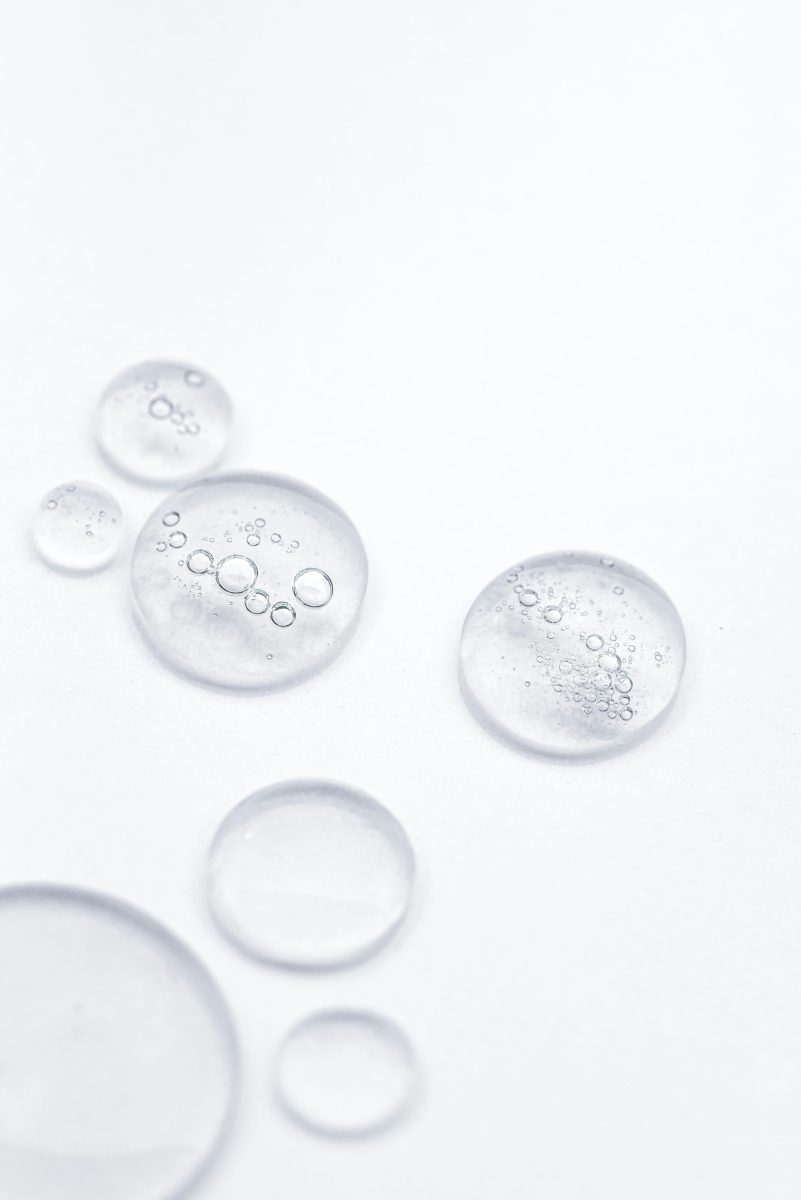Last Updated on: 14th July 2024, 09:30 am
Introduction to Personalized Hydration

Staying hydrated is not just about drinking water; it’s about understanding your body’s unique needs and responding accordingly. The importance of hydration extends beyond quenching thirst—it’s vital for maintaining energy levels, supporting bodily functions, and enhancing overall health. Yet, many of us fall prey to common misconceptions, such as the idea that everyone needs exactly eight glasses of water a day, overlooking individual differences in lifestyle, environment, and physical activity.
Creating a personalized hydration strategy begins with debunking these myths. It involves recognizing that each person’s hydration needs are as unique as their fingerprints. Factors like age, weight, climate, and exercise intensity play crucial roles in determining how much and what type of fluids are best for you. By tuning into your body’s signals and considering your daily activities, you can craft a hydration plan that supports your health and enhances your performance, whether at work, at play, or in the gym.
- Embrace the journey towards optimal hydration. It’s a simple yet profound step towards a healthier, more vibrant you.
Understanding Your Body’s Hydration Needs

Hydration is a dynamic balance, influenced by numerous factors. Your activity level, the environment you’re in, and any existing health conditions significantly dictate your hydration requirements. An athlete, for instance, will need more fluids than someone with a sedentary lifestyle. Similarly, hot, humid weather increases your need for water, as does battling illnesses that cause fever, vomiting, or diarrhea.
Recognizing the signs of dehydration is crucial. Thirst, dry mouth, fatigue, and dark-colored urine are your body’s way of signaling the need for more fluids. Conversely, overhydration, though less common, is equally dangerous. Symptoms include nausea, headaches, and in severe cases, confusion. It’s a delicate balance that requires attention.
Assessing your hydration status doesn’t have to be a guessing game. Simple tools and methods can offer insights. The color of your urine is a straightforward indicator; pale yellow suggests good hydration, while darker shades indicate a need for more fluids. Additionally, paying attention to how often you drink and urinate can provide clues. For a more precise measure, monitoring your weight before and after exercise can reveal fluid loss, guiding you on how much to replenish.
Creating a personalized hydration strategy is about listening to your body and responding to its needs. By understanding the factors that affect hydration and recognizing the signs of imbalance, you can ensure that your body is adequately hydrated, supporting your health and enhancing your performance in every aspect of life.
The Role of Water in the Body

Functions of Water in the Body
- Water, the elixir of life, plays a pivotal role in the human body. It’s the medium through which vital nutrients are transported, waste products are flushed out, and chemical reactions occur.
- Water regulates our body temperature, acting as a natural thermostat.
- It also lubricates joints, ensuring smooth movements and reducing the risk of injuries.
- Every cell, tissue, and organ relies on water to function optimally.
How Hydration Impacts Physical Performance and Cognitive Function
- Adequate hydration enhances physical endurance and strength by preventing fatigue and enabling efficient cardiovascular function.
- On the cognitive front, staying hydrated improves concentration, reaction times, and decision-making abilities. The brain thrives on proper hydration, leading to clearer thinking and better focus.
The Relationship Between Hydration and Overall Health
- Hydration and health are deeply intertwined. Beyond its immediate impact on physical and cognitive performance, proper hydration supports long-term health.
- It aids in digestion, helps maintain healthy skin, and can even reduce the risk of chronic diseases such as urinary tract infections and kidney stones.
- Hydration is a cornerstone of wellness, influencing everything from mood to the immune system’s effectiveness. By staying hydrated, you’re not just quenching thirst—you’re nurturing your body’s well-being.
Creating a personalized hydration strategy is about more than just drinking water. It’s about understanding your body’s unique needs and responding to them. Whether you’re an athlete pushing the limits or someone navigating the daily demands of life, hydration is key. Listen to your body, recognize the signs of dehydration, and adjust your fluid intake accordingly. Your body will thank you for it, with every cell, every breath, and every step you take towards a healthier, more vibrant you.
Calculating Your Optimal Daily Water Intake

Embarking on a journey to optimal hydration begins with understanding how much water your body truly needs. Forget the one-size-fits-all approach; calculating your daily water intake is a personalized process. A simple formula to start with is to drink half your body weight in ounces. For example, if you weigh 150 pounds, aim for 75 ounces of water a day. But, this is just the beginning.
- Adjusting your water intake is crucial, as personal factors such as age, sex, weight, and lifestyle significantly influence your needs.
- Active individuals and those living in hot climates naturally require more water.
- It’s essential to listen to your body and adjust accordingly, especially after intense workouts or exposure to high temperatures.
Diet and other beverages play a significant role in hydration. Foods high in water content, like fruits and vegetables, contribute to your daily intake, while caffeinated and alcoholic drinks can lead to dehydration. It’s a delicate balance, understanding that not all fluids hydrate equally and that your diet can significantly impact your hydration levels.
Creating a personalized hydration strategy is a dynamic process. It involves constant monitoring and adjusting based on your body’s feedback and lifestyle changes. By paying close attention to your intake and how you feel, you can ensure that your body remains well-hydrated, supporting your health and enhancing your performance in every aspect of life.
Hydration Strategies for Different Activities and Environments

Hydration needs vary significantly across different activities and environments. Tailoring your hydration strategy to your specific circumstances is crucial for maintaining optimal performance and health.
Exercise, High Temperatures, and High Altitudes
During exercise, especially in hot weather or at high altitudes, your body loses fluids at an accelerated rate. Increasing your water intake before, during, and after physical activity is essential. Consider sports drinks with electrolytes for prolonged exercise to replenish lost salts. In high altitudes, aim to drink more than usual even if you’re not thirsty, as dehydration occurs more rapidly.
Staying Hydrated During Travel
Travel, particularly air travel, can lead to dehydration. The low humidity levels in airplane cabins draw moisture from the body. Drinking water regularly throughout your journey, avoiding alcohol and caffeine, and carrying a reusable water bottle to refill are effective strategies for staying hydrated on the go.
Adjusting Hydration in Cold Environments or During Winter Sports
In cold environments or while engaging in winter sports, you might not feel thirsty, but your hydration needs are still significant. Breathing in cold air and the energy expended to keep warm increase fluid loss. Drinking warm fluids can encourage hydration and help maintain body temperature. Don’t wait until you’re thirsty to drink—schedule regular hydration breaks.
Understanding your body’s unique hydration needs across different activities and environments is a cornerstone of health and performance. By adjusting your hydration strategy to match your circumstances, you can support your body’s needs, enhancing your well-being and enabling you to perform at your best.
Innovative Tools for Hydration Monitoring

Smart water bottles and hydration tracking apps are revolutionizing the way we maintain our water intake. These high-tech bottles track how much you drink and sync with apps to remind you when it’s time to take a sip. They often come with features like temperature sensors, ensuring your water is just the right temperature.
- Wearable technology has also stepped into the hydration arena. Devices worn on the wrist or as part of your clothing can now estimate your hydration levels, alerting you to drink more before you even feel thirsty. This proactive approach is particularly useful for athletes or those with demanding outdoor jobs.
- Traditional methods like urine color charts remain reliable. These charts help you gauge your hydration status at a glance, with various shades indicating whether you need to increase your fluid intake.
Other physical indicators, such as the frequency of bathroom breaks and the elasticity of your skin, are simple yet effective ways to monitor hydration.
Integrating these tools into your daily routine can make a significant difference. They provide tangible data and reminders, ensuring you stay on track with your personalized hydration strategy. With consistent use, these technologies and methods empower you to make informed decisions about your fluid consumption, keeping your body finely tuned and at peak performance.
Implementing and Adjusting Your Hydration Strategy

Setting realistic hydration goals is the first step toward a healthier you. Begin by creating a hydration schedule that aligns with your daily routine. Whether it’s a glass of water first thing in the morning or a hydration break every hour, find what works for you. This personalized approach ensures that your body gets the fluids it needs, without feeling overwhelmed.
- Listening to your body is crucial. It tells you when adjustments are needed. Maybe you’ve increased your workout intensity, or the weather has suddenly turned hot. These changes affect your hydration needs.
- Recognizing signs like thirst, fatigue, or dry mouth prompts you to tweak your hydration plan. It’s about being in tune with your body and responding to its signals.
Consistency is key. Making hydration a habit means integrating it into your daily life so seamlessly that it becomes second nature. It’s not just about drinking water when you’re thirsty but maintaining a steady intake throughout the day. This consistent effort supports your body’s functions, enhances your health, and boosts your energy levels. Remember, a well-hydrated body is a happy body.
By setting achievable goals, listening to your body’s cues, and striving for consistency, you can develop a hydration strategy that’s as unique as you are. This tailored approach not only meets your individual needs but also supports your overall health and well-being. Embrace the journey of fine-tuning your hydration habits, and enjoy the myriad benefits that come from being well-hydrated.
In Closing
Hydration is a personal journey, unique to each individual. It’s the foundation of vitality and performance. By tuning into your body’s cues and embracing a tailored hydration strategy, you unlock the door to enhanced well-being and peak performance. This article has navigated the nuances of creating a personalized hydration plan, emphasizing the importance of listening to your body and adjusting fluid intake based on activity levels, environment, and health. As you move forward, let your hydration strategy evolve with you, ensuring every sip contributes to a healthier, more vibrant life. Embrace this journey with intention and mindfulness, and watch as your body thanks you in countless ways.
Creating a Personalized Hydration Strategy FAQs
Yes, drinking too much water can lead to a condition called hyponatremia, where the sodium levels in your blood become dangerously low. Symptoms include nausea, headache, confusion, and in severe cases, seizures and coma. It’s important to balance your water intake with your body’s needs and not exceed them significantly.
Yes, the need for hydration changes with age, as older adults may have a diminished sense of thirst and are at higher risk of dehydration. They may need to consciously remind themselves to drink water regularly, even if they do not feel thirsty. Additionally, health conditions and medications common in older populations can affect hydration status.
You can tell if you’re properly hydrated by checking the color of your urine; pale yellow indicates good hydration, while dark yellow suggests you need more fluids. Other indicators include regular urination (about every 2-4 hours), lack of thirst, and feeling alert and well. Persistent thirst, dry mouth, and dizziness are signs of dehydration.
Climate significantly affects hydration needs; hot or humid weather increases sweat production, which in turn increases fluid loss and the need for hydration. In contrast, cold climates can also increase the need for hydration because of the dry air and increased respiratory fluid loss. Adjusting fluid intake based on the weather and your activity level is essential for maintaining hydration.
Exercise increases your hydration needs because you lose more fluid through sweat and respiration. It’s recommended to drink an additional 0.4 to 0.8 liters of water per hour of exercise, depending on the intensity and conditions. Pre-hydration and rehydration are crucial to maintain performance and prevent dehydration.
The amount of water you should drink daily for optimal hydration varies, but a general guideline is about 3.7 liters for men and 2.7 liters for women. This includes fluids from water, other beverages, and food. Factors such as activity level, climate, and health status can increase or decrease this amount.
Besides water, good sources of hydration include herbal teas, milk, and diluted fruit juices, as well as fruits and vegetables with high water content like cucumbers, tomatoes, and watermelon. These alternatives can provide both hydration and essential nutrients. However, it’s important to be mindful of added sugars and calories in some beverages.
Signs of dehydration include thirst, dry mouth, fatigue, decreased urine output, dark yellow urine, dry skin, and dizziness. More severe symptoms can include rapid heartbeat, rapid breathing, sunken eyes, confusion, and fainting. It’s important to recognize these signs early and increase fluid intake accordingly to prevent more serious complications.
Electrolytes, such as sodium, potassium, and magnesium, are crucial for hydration because they help balance fluid levels in the body. They are lost through sweat, especially during prolonged physical activity, making it important to replenish them. Electrolyte-rich drinks or foods can help maintain the body’s electrolyte balance and enhance hydration.
Body weight significantly influences hydration needs because a heavier person has more body mass that requires hydration. A common recommendation is to drink between 0.5 ounces and 1 ounce of water for each pound you weigh, daily. Adjustments should be made based on activity level and environmental conditions.
Orlando is a all round athlete from Australia, now resident in Germany. His sports of passion of American Football(Offensive line), weight training and indoor rock climbing where he uses his 195cm wing span to his advantage.



